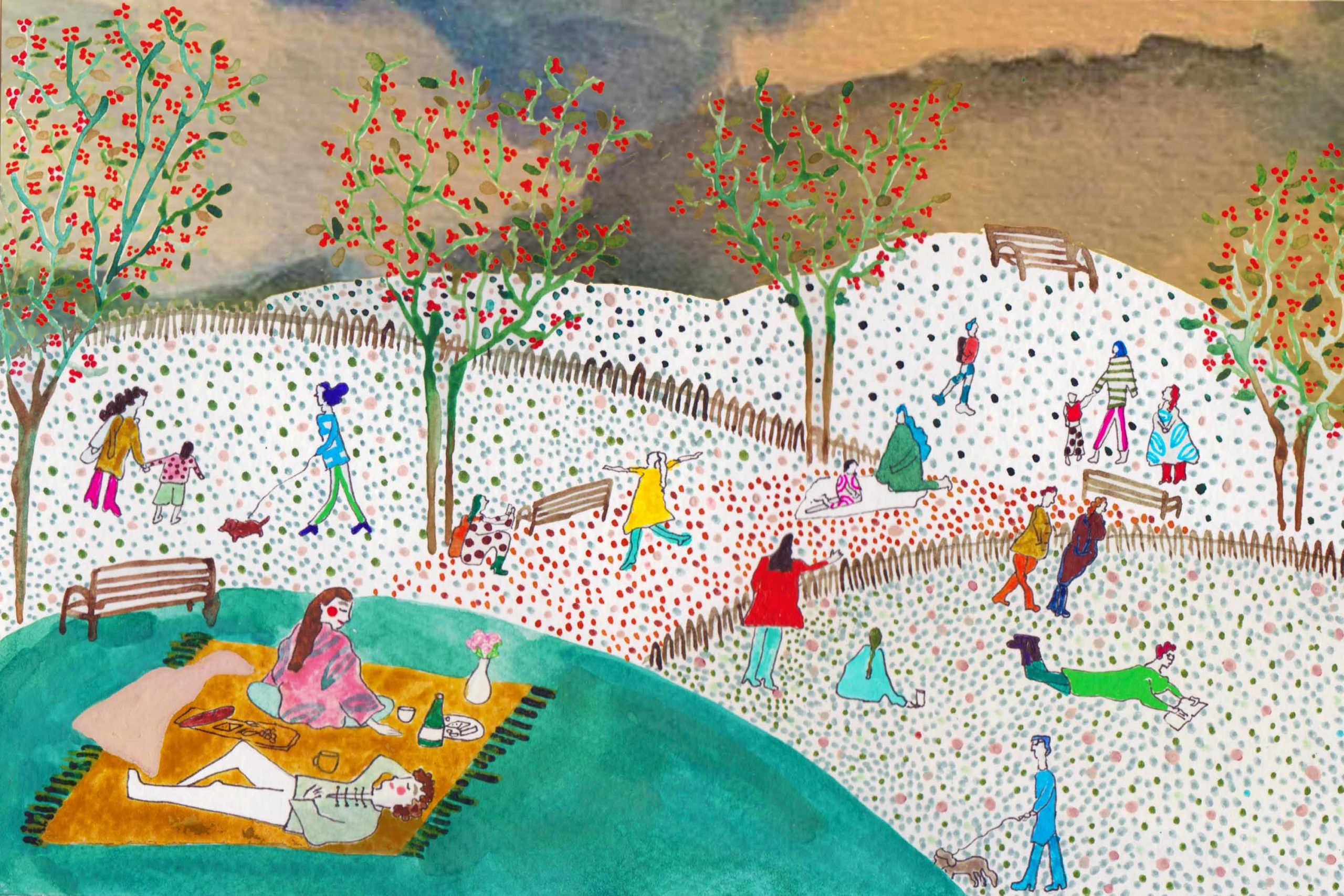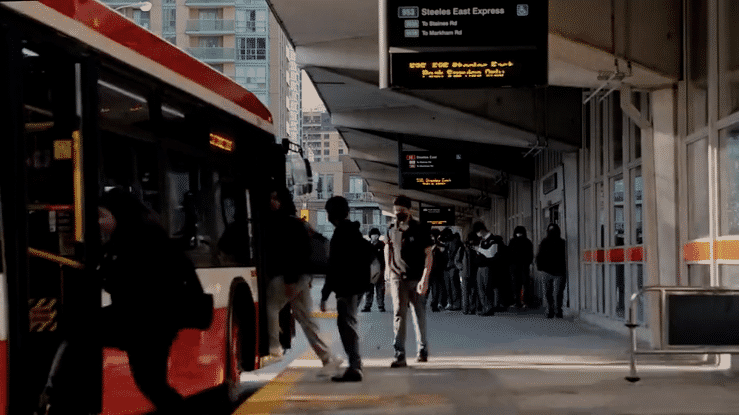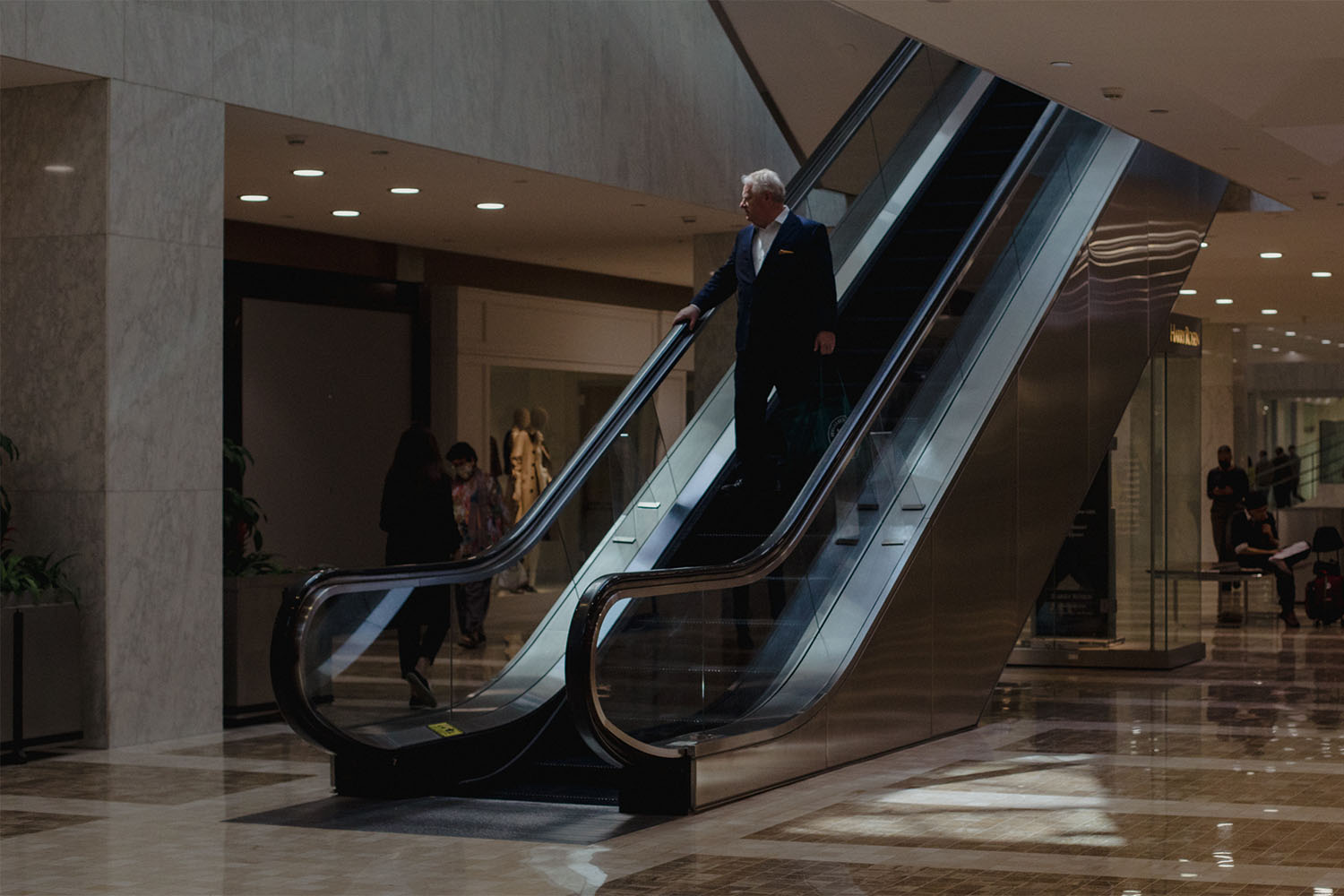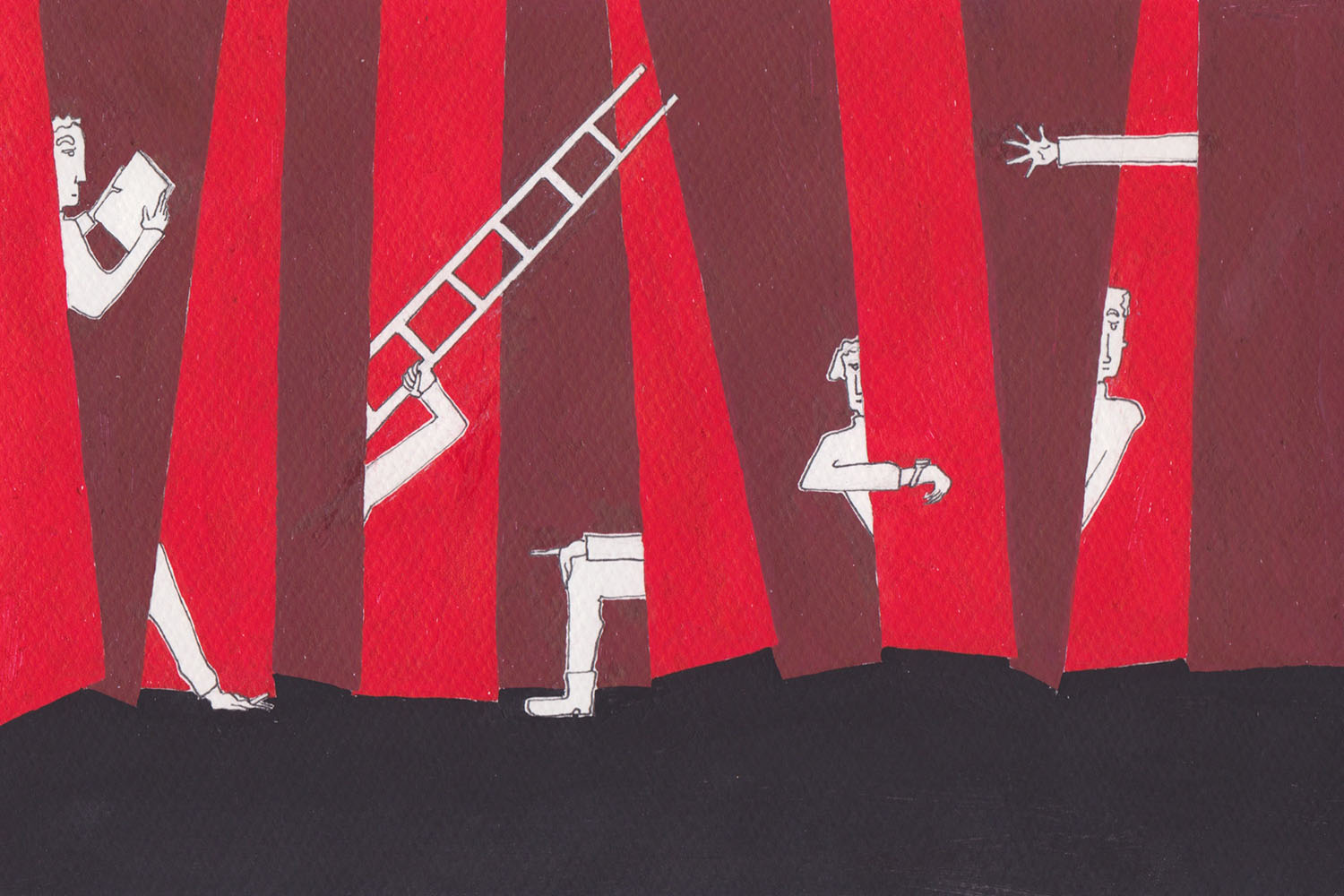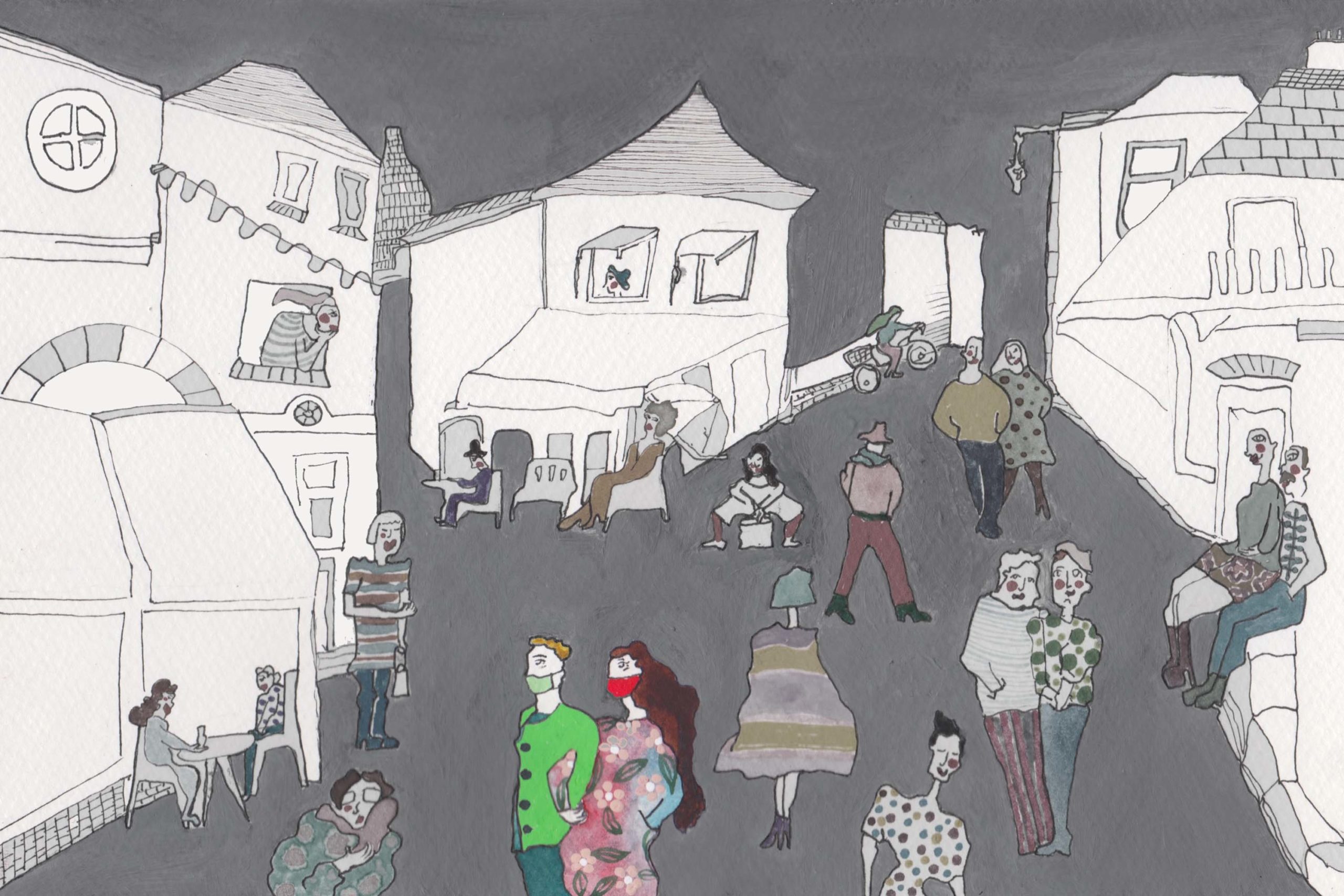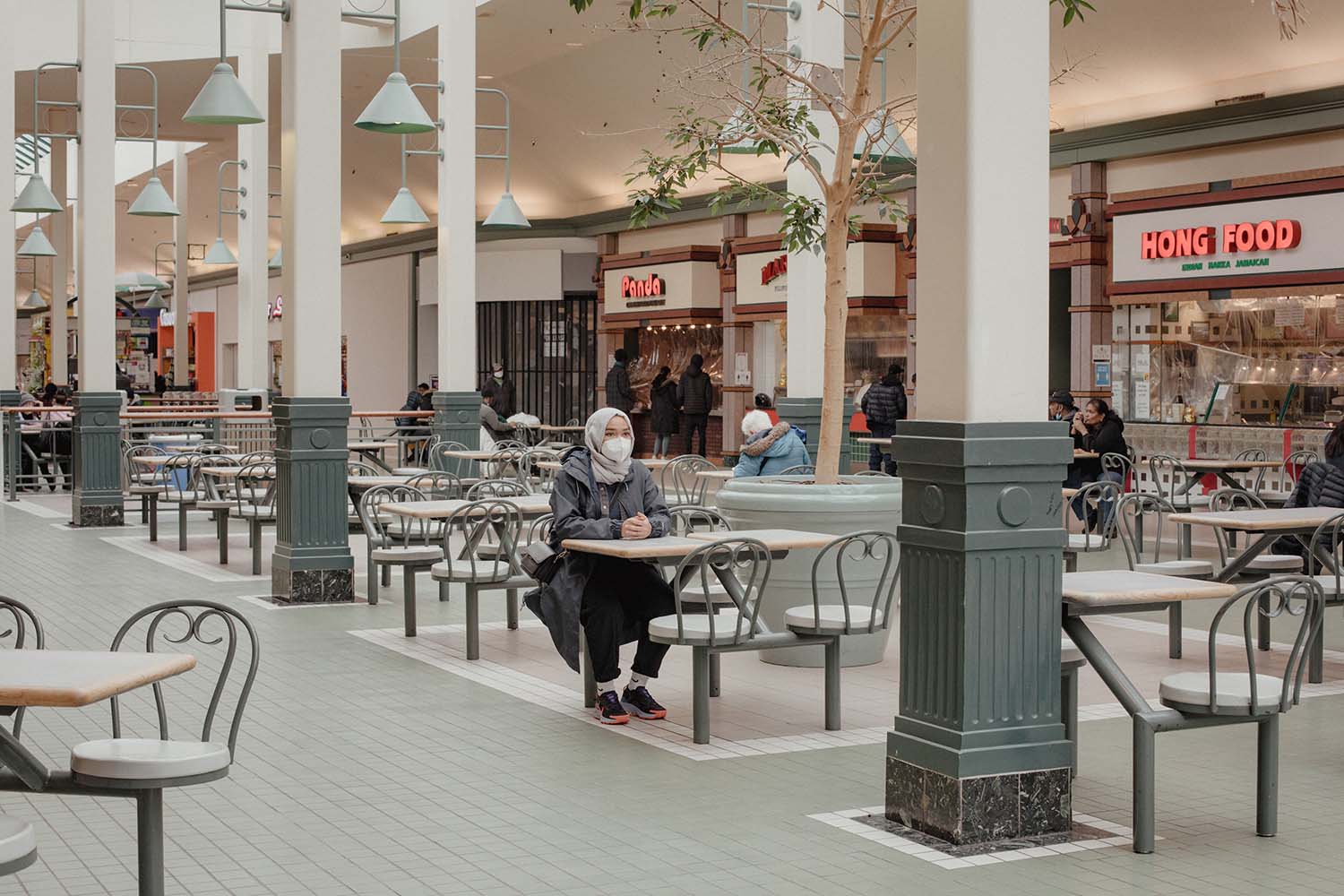
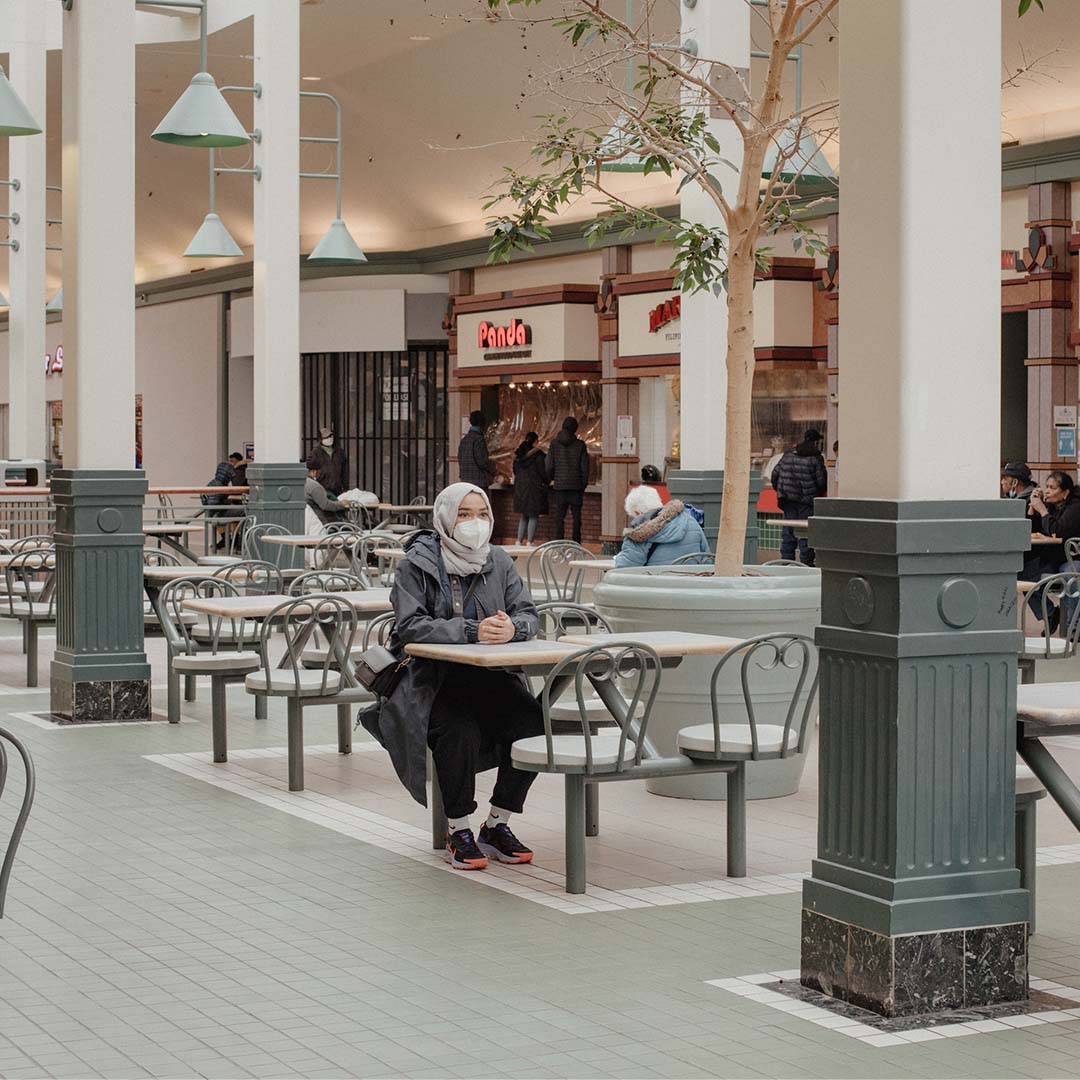
I have long maintained, against haters and ignorant slanderers alike, that Malvern Town Centre is the best mall in the world.
Known simply as Malvern mall, the 292,000-square-foot plaza sits in the heart of Malvern, the east Scarborough neighbourhood where I grew up. It is not—and I say this with profound love and loyalty—a “nice” mall. The interior of the vast one-floor plaza is frozen in time, a testament to late 80s mall decor featuring seafoam green colour accents and a long stretch of skylights that guide you through an array of services and shops. But it has the necessities: a grocery store, a tailor, a dollar store, a bank, a food court.
Scarborough’s strip malls and plazas are iconic to the landscape, impossible to miss on the long bus rides through various pockets of this sprawling former township. Ask anyone from Scarborough and they’ll likely have their own Malvern mall, a place that saw them through their most transformative years. Maybe their strip mall houses the bank where they opened up their very first account, or still serves that familiar meal from when they were young. Modern architecture and fancy stores are no match for the enduring sweetness of nostalgia and comfort.
These spots survive because of immigrant-owned businesses and equally diverse customer bases. But the things that make inner-suburban malls unique also make them more vulnerable to change—particularly that brought on by a global pandemic. As businesses across Toronto struggled to survive during the constant lockdowns, many of them closing their doors for good, the mom-and-pop stores in Scarborough faced the additional hurdle of existing in a part of the city that was neglected even before COVID. Places like Malvern mall, which serve as intimate spaces of culture, community, and history, were at risk long before the virus hit. I can’t help but wonder what will become of them now.
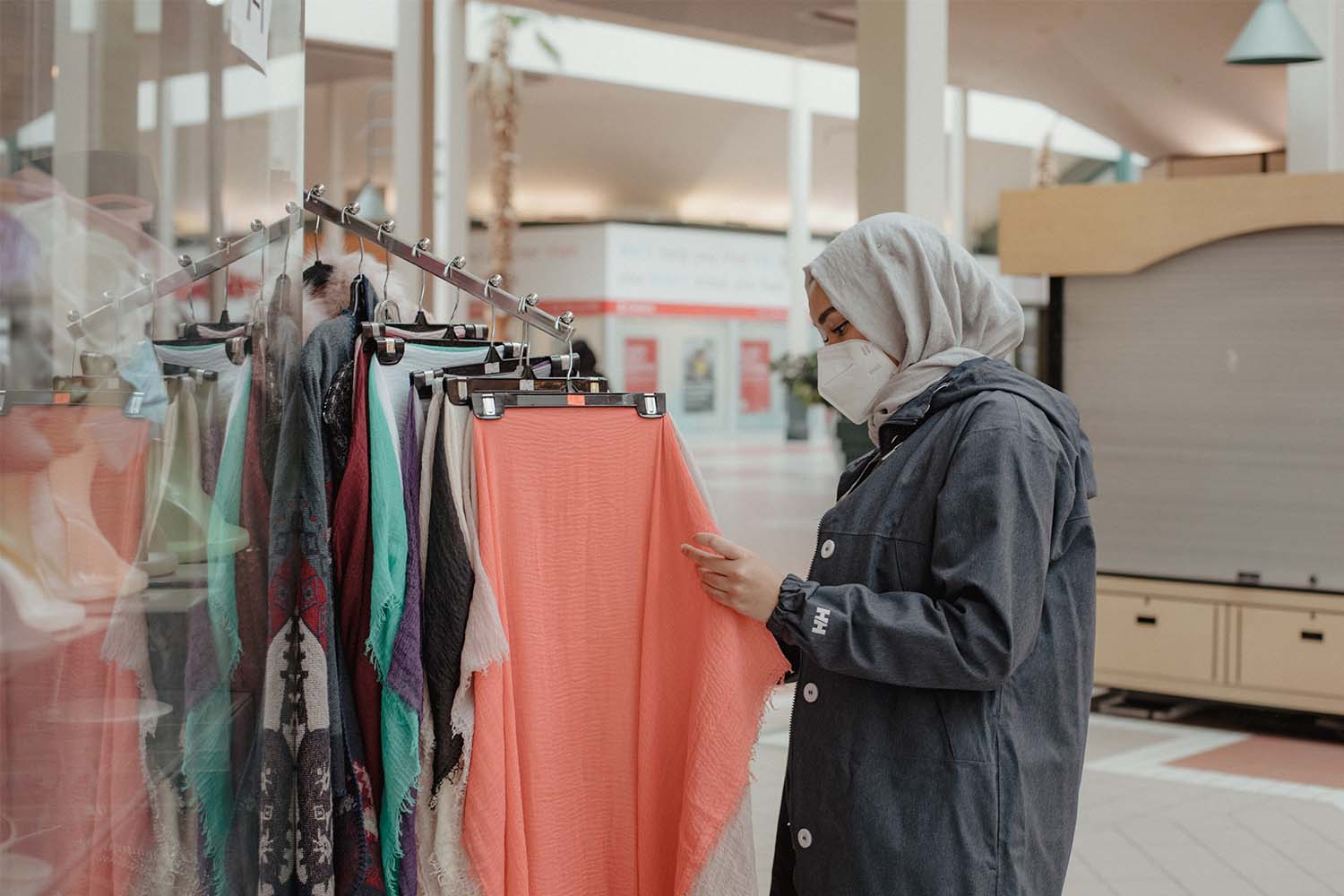
I have walked the green, peach and beige tiles of Malvern mall through each phase of my life. As a preschooler, holding my parents’ hands as they zipped around the plaza, Malvern Town Centre seemed like a bustling hub. If I was lucky, we’d stop by Blockbuster and pick up a few cartoons on VHS. In the early aughts, the mall was anchored by Zellers on one end and No Frills on the other. But sandwiched between the big-box stores that drew in the crowds were the smaller, independent stores that offered the real gems.
The longest-standing tenant at Malvern Town Centre is John Pomer Menswear, a family business owned by Henry Pomer. I must have walked by this shop hundreds of times but, not quite needing menswear myself, I never ventured in. Pomer tells me he came to Malvern before the mall was built to scope it out and see whether the neighbourhood was compatible with his business, subsequently signing a lease months in advance of the store opening in 1987.
“It’ll be 35 years this fall,” he says. “At the time…the idea of another store in Scarborough networked well with our existing stores there. Although, as I quickly came to learn, it’s an entirely different demographic here than it is in Agincourt or Warden Woods. You can’t paint a whole borough with one brush.”
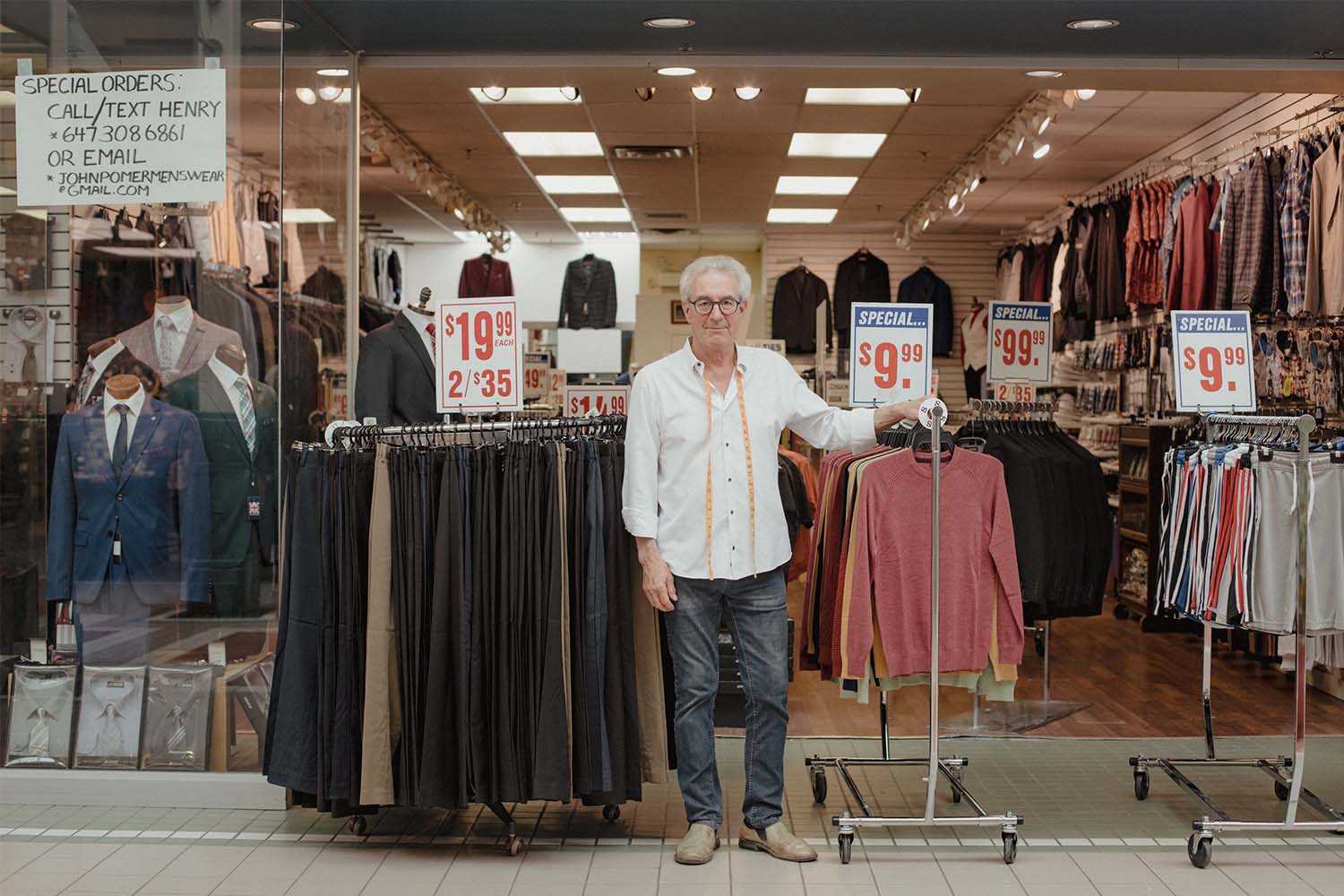
He’s right. Malvern’s population of nearly 45,000 is predominantly made up of South Asian and Black residents, with large Chinese and Filipino communities. About 62 percent of the community are immigrants, which is more than Toronto’s average. Next to Malvern mall is the TAIBU Community Health Centre, a community-driven organization serving Black communities. Attached to the mall itself is Native Child and Family Services of Toronto and inside, beside John Pomer, is Service Canada, where it’s common to find a long line winding out into the hallway.
Malvern mall serves the community that lives directly around it, as do the many other strip malls and plazas across Scarborough. For Howard Tam, founder of Eat More Scarborough Food Tours, that local mall was Agincourt’s Dragon Centre—the first indoor Chinese shopping mall in North America (the Chinese community is Agincourt’s largest ethnocultural group). “I have fond memories of the place,” Tam says. “Growing up, it was the only thing I remember that we had.”
Tam—who has a background in urban planning—sees spaces like Malvern mall as full of opportunity for locals, from cheaper rent for store owners to culturally relevant products for customers, “just things you wouldn’t find in any other mall”. (It’s true—I have bought many a hijab at Malvern mall.)
But, much like the story of Scarborough itself, it’s hard to get outsiders to see value in these spaces. A cursory search of Malvern mall will bring up news articles about shootings and other crimes in the area. “It grieves me, the pejorative coverage,” Pomer says. “Stuff happens everywhere. I live in a predominately Jewish area, fairly well-to-do…and there are shootings, there are break-ins, there are thefts.” He adds that when you think of Malvern, you think ethnic, “and that’s a code word.”
And then there’s the aesthetics of it all. Scholarly articles that talk about strip malls like Malvern Town Centre often use the word “eyesore” in their descriptions—but Tam doesn’t subscribe to this implication of undesirability. These places fill a particular marketplace need, and he believes we need to be clear about what those needs are. “The idea that we can judge them based on how they look is a bit annoying to me,” he says. “It feels like we’re not spending the time to really try and understand the overarching, overlapping and connected dynamics of what brings these places to life.”
Zhixi Zhuang, associate professor at Ryerson University’s School of Urban and Regional Planning, echoes those sentiments. Zhuang examined over 110 suburban ethnic retail clusters in the GTA, including Scarborough. From her expansive research, she says the malls in Scarborough went beyond mere shopping destinations and served as community hubs for all ages, transformed by the immigrant communities that frequent them. But they tend to be overlooked, and thereby underfunded, with a lack of financial support for the socialization or other activities that might happen there, like Malvern mall’s Junior King and Queen Showcase for Caribana, or the morning senior workout programs run by Malvern Family Resource Centre.
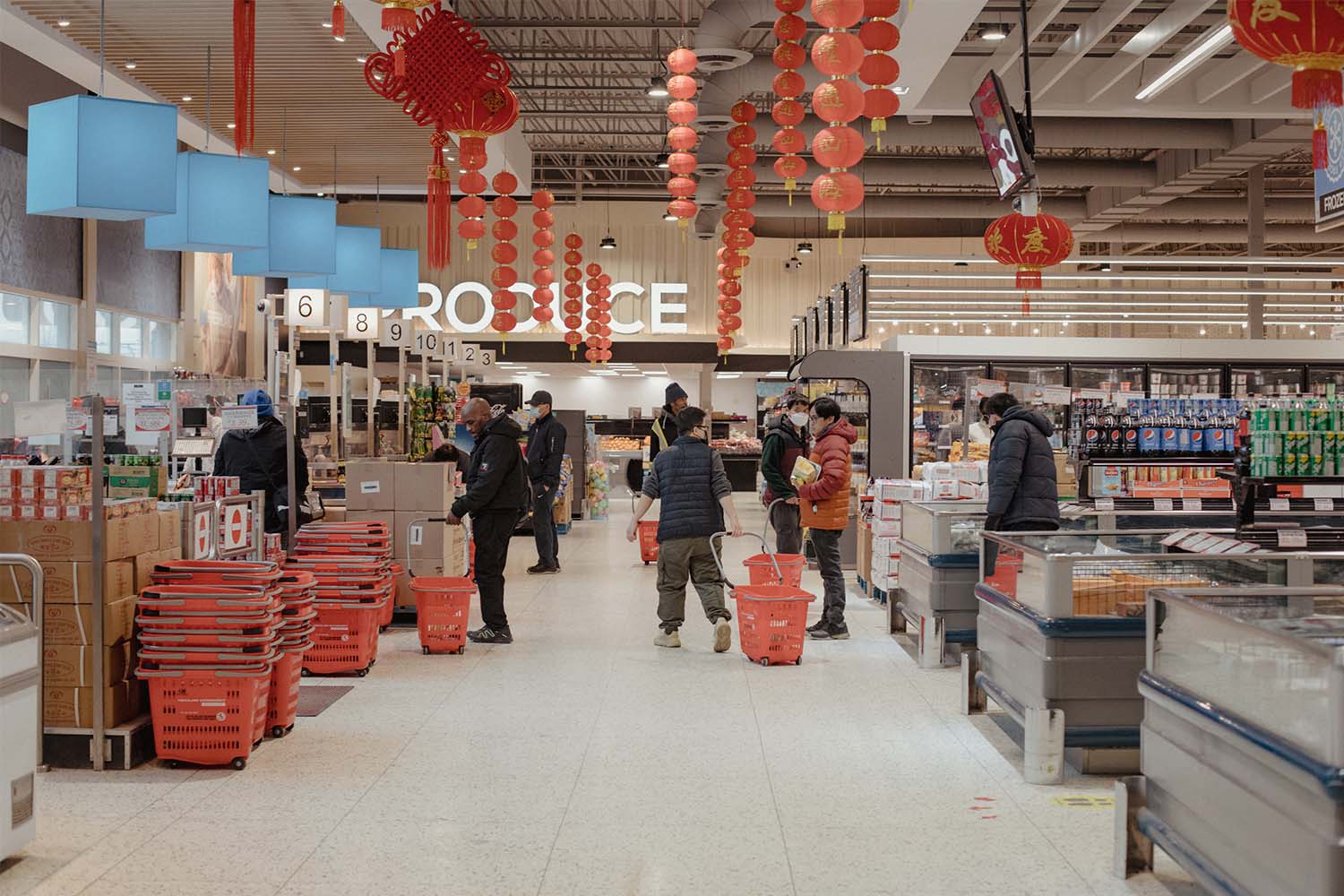
Food is also a big part of turning these seemingly ordinary places into cultural centres. Growing up, Malvern mall was the go-to for quick meals. During my elementary school years, it housed a halal KFC. On many Toonie Tuesdays, my dinner consisted of a chicken leg, thigh, and fries for just $2. By my teenage years the KFC vanished, but to my delight, a halal Hakka Chinese spot opened. During the 45 minutes allocated for lunch, my friends and I would dash to the mall and, for less than $5, get a heaping plate of rice or noodles with any two meat or vegetable dishes. While prices have gone up since, you still get a huge amount of food for an astonishingly low price. My parents, who are notoriously cheap and have tried many Hakka restaurants in Toronto, claim Hong Food remains their favourite. But despite this plaza stalwart, many stores have gone the way of KFC and Zellers. The interior of the mall has been an ever-changing landscape for more than a decade. Every day, another shop abruptly disappears, only to be replaced by something else shortly after.
With COVID, businesses have been impacted considerably, and the hit to minority businesses was especially massive. During the earlier days of the pandemic, when many of the shops remained closed, I’d buy a small bubble tea and almond twist bun from Kin-Kin Bakery and wander around the eerily sparse mall. It became my only outing, so much so that each time I left the house, my dad would call out to me, “Going to Malvern mall?” By now, I’m used to shops disappearing and new ones sprouting in their place, but even that felt accelerated. Gone were the elderly folks doing exercise, or the lunchtime rush from nearby high schools. The food court is now basically a Subway, two Chinese fast-food spots, and a newly opened Filipino joint. An electronics store that’s been around since I was a kid seems to have been abruptly vacated—a notice is taped to the front window asking the owners to please get in touch.
Join the thousands of Torontonians who've signed up for our free newsletter and get award-winning local journalism delivered to your inbox.
"*" indicates required fields
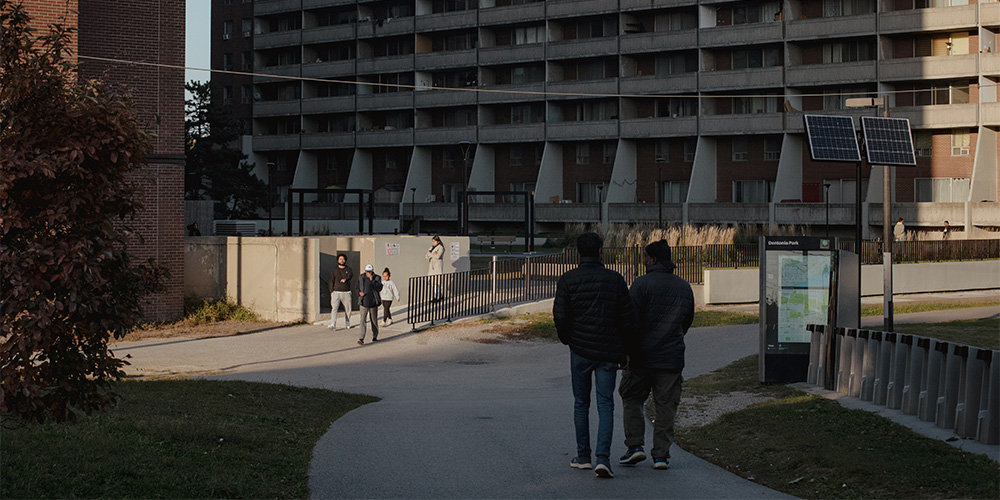
Tam says that while he’s seen more vacancies and shops that have shut down because of COVID, he’s also seen a new level of creativity and entrepreneurial spirit from people trying to open and maintain stores in Scarborough, like former employees of the hospitality industry opening their own independent food ventures, or restaurants shifting to catering and learning to incorporate social media into their advertising. But the threat of larger redevelopment projects still looms. Tam’s beloved Dragon Centre Mall is set to be replaced by a pair of condominium towers, though the pandemic has stalled these plans. Woodside Square Mall, similar in scope to Malvern mall, is undergoing plans to retain the mall but convert the surrounding area into high-rise and mid-rise buildings.
All these factors contribute to changing dynamics and the cycle of gentrification. Redevelopment projects could mean rising rents, which ultimately squeeze out the smaller independent stores. Because of this, affordable goods become less common, which is particularly alarming in a community like Malvern with a high percentage of newcomers. “It’s not even just about protecting the people who live here,” Tam says. “That’s one part of it. But if I live here and I can’t access the services or the goods at the price range that I can afford, I might have to think about moving.”
In the future, Zhuang hopes to see more cultural competency when it comes to city planning, so that people who decide what to do with these spaces actually see and understand what they mean to local communities. The urban planning profession is predominately white, she says, and anti-racist practices are needed to overcome systemic barriers within the field itself. Planners, policy makers, and media alike have played a role in stigmatizing Scarborough; it’s easy to ignore communities like Malvern because people consider them a landing pad for immigrants, and it’s easy to associate that with low-income families who only come to do low-end jobs. “Despite the fact that Toronto is so proud of its multicultural reputation, a lot of things are not really recognized or prioritized on the ground,” she says.

It’s always been apparent that so much more is possible in these spaces. Anyone can dismiss a strip mall based on first impressions and an outsider’s skewed narrative, but look closely and you’ll see an entire ecosystem built by immigrants, and shaped by surrounding communities. Zhuang imagines the creation of multicultural food hubs with programs that bring people from different backgrounds together to engage in training programs, or teaching people how to cook foods they’re unfamiliar with, or entrepreneurship classes that might help other newcomers and immigrants write a business plan. “But first thing’s first, [let’s] get the name out there. Scarborough is a really great place to live, work, shop, pray and play.”
Back at Malvern Town Centre, Pomer likes the mall as it is, but says he’s seen a generational shift in customers over the last few years. The people he once served as kids have returned to him as men, with families of their own. Part of retaining these spaces is understanding how new generations will interact with them, while ensuring the elders of the community aren’t left behind. Community engagement isn’t a one-off deal. It must happen continuously to remain relevant. But that’s an impossible task if the proper respect and attention isn’t paid, especially now as the city tries to deal with the repercussions of COVID. “The pandemic has humbled all of us. As a business person, we were locked out and not allowed to open the doors. I am so grateful every day that I can open those doors and interact with my customers again,” Pomer says.
I’m grateful, too. For the way this mall, with all its hidden treasures, has seen me through my entire life. From a bouncing child running the candy aisles of the dollar store to the teenage antics I’d get up to after school to now, an adult sitting at the small desk Pomer has set up beside his cash register. No mall will ever know me as intimately as this one. I will remain steadfast in my claim that it’s the best, to anyone that will hear me. Maybe you’ll take it seriously and visit, spend a few dollars and discover something cool, contribute to its survival so that it can continue doing what it does best: serving Malvern.
As I ready myself to leave, I ask Pomer how much longer he anticipates his business being at Malvern mall. “Forever and ever, amen,” he replies.
Amen.

